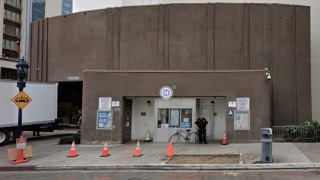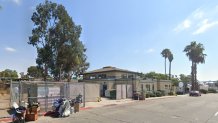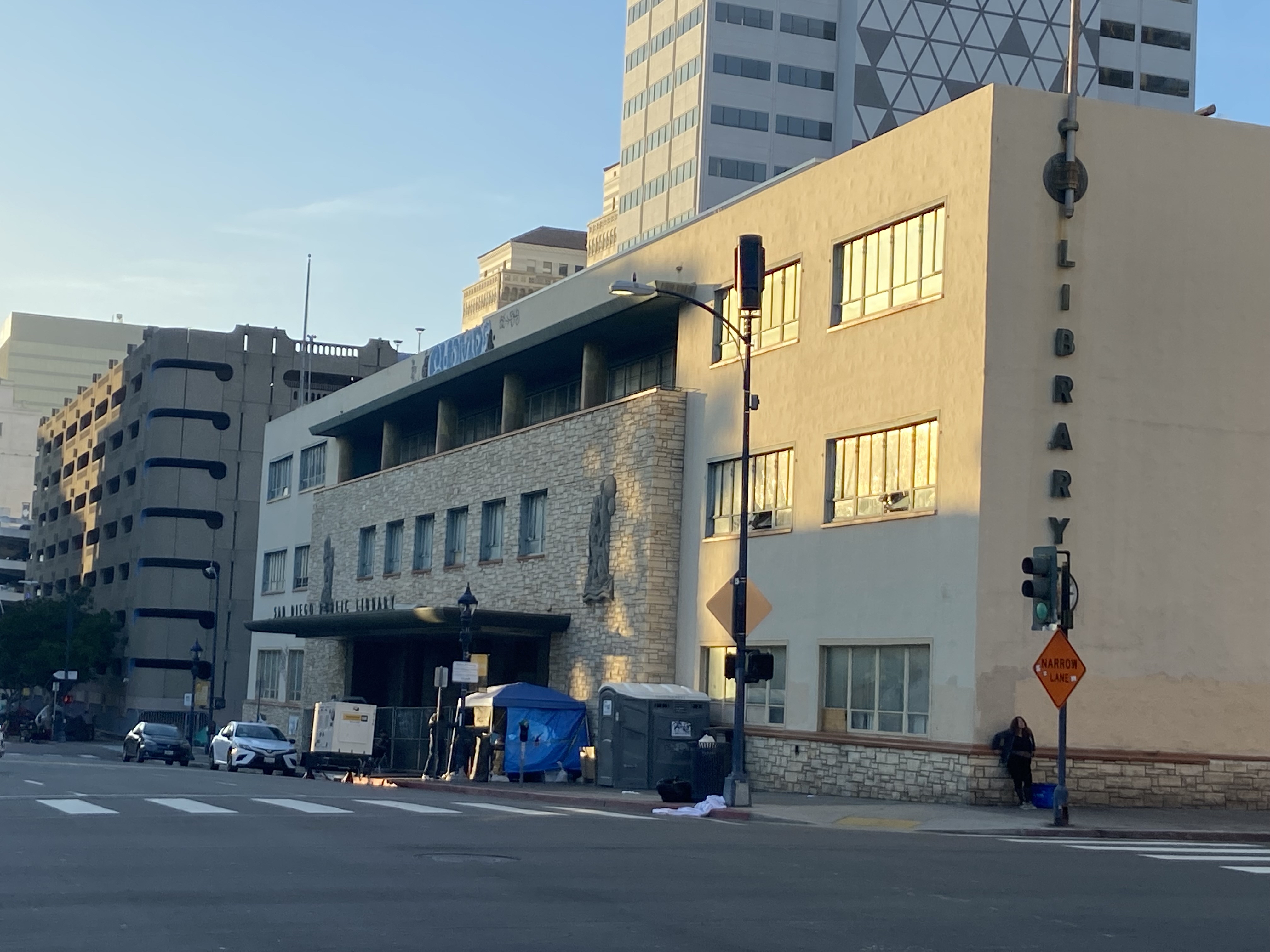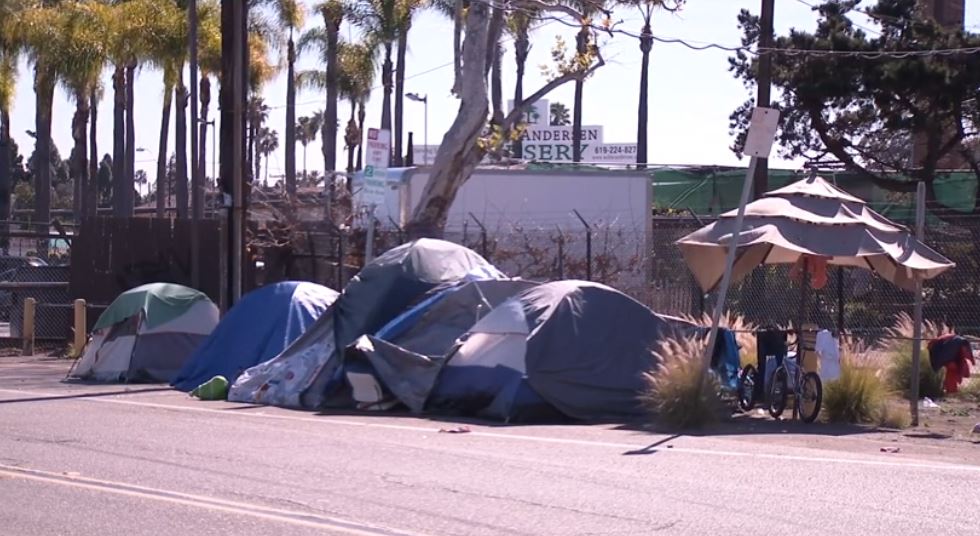
It's happened to everyone: You're in the Gaslamp, say, or the East Village and you need to, well, go, but there's no bathroom.
If you're a reasonably well-dressed person, you may sneak into a bar or restaurant. But what if you're homeless?
Now, imagine if there were lots of public restrooms, but they cost 50 cents. You might avail yourself of one, but would the homeless population?
The problem might seem small, but it can be a deadly one. San Diegans don't need a long memory to recall the Hepatitis A outbreak downtown in 2017, with 577 cases of Hep A. Of those cases, 396 resulted in hospitalization and 20 resulted in death. While IV drug use is a frequent red flag for Hep A, it's usually spread through the fecal-oral route from person to person, which is why more public bathrooms and hand-washing stations were made available in at-risk areas.
Get San Diego local news, weather forecasts, sports and lifestyle stories to your inbox. Sign up for NBC San Diego newsletters.
The idea of charging to use public restrooms — and one city official who works for Councilman Sean El-Rivera stressed the concept did not cover ALL public bathrooms — was officially raised in December by Elo-Rivera at a meeting of the San Diego City Council, which was considering the city's 2023-24 State and Federal Legislative Plan.
Homelessness in San Diego
Rivera offered an amendment to the plan, one eventually seconded by Councilman Raul Campillo, who called it "a very good amendment." The full council eventually unanimously passed the plan, including the amendment.
"We've had multiple conversations here at the council and we've had conversations at MTS as well about trying to increase access to restrooms," Elo-Rivera said in December. "We also know the maintenance costs associated with providing the level of access to restrooms that we might seek; it can really add up. It can really, really become quite expensive."
A Plan to Pay for More Downtown Bathrooms?
In a nutshell, the argument goes like this: The city used to have more restrooms, but they were so expensive to maintain that some were shuttered. So, how to pay for them?
"An additional barrier to, you know, being able to provide for that very, very basic human need is made more difficult by state legislation that does not allow for any sort of cost recovery or fee," Elo-Rivera told his fellow councilmembers, referring to a state ban on charging admission for public restrooms. "We've heard from multiple people in the community that they would gladly pay a quarter or 50 cents in order to have access to a clean restroom."
For the city's plan to work, it needs, then, to circumvent the statewide ban on charging people to use public restrooms.
"Again, I think the initial efforts to ban any cost recovery — it was well-intended but the result has been that there are fewer and fewer and fewer public restrooms, and there are really, really big public-health impacts of that as a result — as well as just not providing the level of dignity that folks in our community deserve," Elo-Rivera also said in December.
Crucial to the city's plan to charge for some restrooms, then, is getting a waiver of the ban.
"This is not meant to be a barrier to access but to actually increase the number of restrooms that we have out there," Elo-Rivera explained. "So if we could add language around supporting legislation that would allow local jurisdictions to implement cost-recovery measures for public bathroom access."
Right now, the city of San Diego has no official plan or proposal before it to charge people to use public restrooms, but the city did send this language to legislators in Sacramento: “support legislation that allows local jurisdictions to implement cost-recovery measures for public bathroom access.”
Elo-Rivera reiterated and clarified his thinking in an email sent to NBC 7 on Wednesday, saying that, at least for now, nothing concrete was taking shape at the city level, and also emphasized a need for San Diego to come up with a solution.
"There is no current proposal to charge for public restrooms," Elo-Rivera said, adding that "the city of San Diego hasn’t been able effectively to address the lack of public restrooms to provide for the basic human needs of city residents and the ban on paid toilets is an impediment to creating more access for everyone in our city. While there are no specific plans in place, I would like to see a network of public restrooms where pay and free toilets are available to all city residents, transit riders and tourists. Lifting the ban on paid restrooms will allow us to begin the conversation on how best to provide greater access.”

Response From a Homeless Advocate
Chris Chan, who's a spokesman for El-Rivera's office (and a former employee of NBC 7), said via email on Tuesday that the council president wants "to be clear that a lifting of the ban on pay toilets does not mean everyone must pay to use the toilet," a statement that resonated with homeless advocate Michael McConnell.
"If they were manned with an attendant who could make sure people who don't have money to get it could get in, that would be a solution," McConnell said on Wednesday morning.
McConnell said the homeless people he spoke with about the proposal agreed about the need for more facilities, but they echoed his thoughts on attendants, mainly because the restrooms need to be cleaned and somebody needs to make sure that people don't spend an unnecessary amount of time in them.
Having attendants operate the bathrooms — or an alternative solution for guaranteeing access to homeless people — is critical, McConnell said, since even 25 cents is too much to ask of some.
"There are people downtown walking around eating out of garbage cans," McConnell said. "These people don't have a penny in their pockets."
One thing everybody seems to agree on: There just aren't enough bathrooms in downtown San Diego — and the problem is only getting worse. McConnell pointed out a specific example.
"There is a day center for homeless people downtown that used to be open seven days a week, pretty long hours, that provided restrooms that were heavily used and due to a lack of city funding for the day center, hours have been cut and weekends have been closed, and so we're losing some restrooms as we speak," McConnell said.
McConnell was referring to the Neil Good Day Center, which is located near the intersection of 17th and K streets, an area heavily frequented by members of San Diego's homeless population and begin restricting its hours in mid-February.




